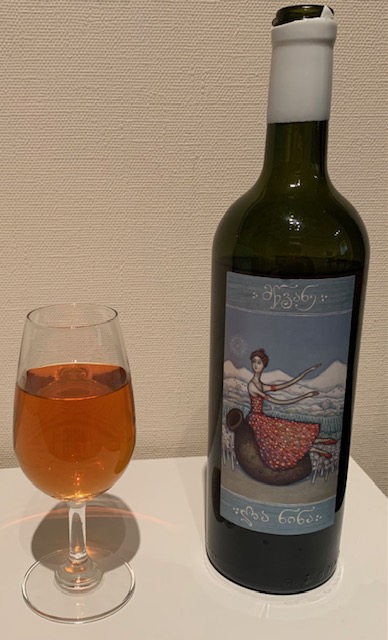
“A rainy night in Georgia, a rainy night in Georgia,” wait a minute, I’m on the wrong continent here. The American state of Georgia does produce wine, but as I have never tasted any, I am not qualified to say much about it. On the other hand, the independent nation, which is officially known as “Georgia,” has an exceedingly long viticultural history. Indeed, The Oxford Companion to Wine has dubbed Georgia, “One of the world’s great and historic centres of both wild and cultivated vines….” and goes on to state that the drink derived therefrom is “integral to the culture” of the country.1 Recently, I have had Georgia on my mind: “Georgia, Georgia, no peace I find. Just an old sweet song keeps Georgia on my mind….” Thank you, Willie. Double entendre intended, of course: those fortunate enough to have tasted the wines of Georgia will have Georgia on their minds for a long time, I suppose. Recently, the country’s wines have been getting more attention overseas, including in Japan. A little while ago I was given a bottle of a Georgian wine, which I will discuss below.

The wine is called La Nina. The back label states in English that it is a “Mtsvane Kvevri.” It is a varietal orange wine made from Mtsvane (a.k.a., Goruli Mtsvane), an indigenous grape of Georgia with a history dating back many centuries. Our readers may know “kvevri” under its other, more common, spelling; namely, “qvevri,” which is defined in Wine Grapes as a “large clay vessel, lined with beeswax and buried in the ground to control the temperature, used for wine fermentation and storage.”2 The grape is used to produce both still wine and sparkling.
The first thing that strikes the drinker about this wine is its color. It is a beautiful pink-orange and looks somewhat similar to a Cote de Provence rose. The next thing is the aroma, which is of medium (+) intensity, with primary notes of peach, flowers, and green apple. To those unfamiliar with wines made using the Kakhetian qvevri wine method, the presence of noticeable tannins in a wine made from a white grape might be a bit disconcerting. Why is this wine slightly astringent? Because it should be! That’s why!
La Nina offers some complexity on the palate, medium alcohol at 12.5% abv, and medium (-) body. It is a pleasant wine that should prove a welcome companion at the dinner table.
This wine is from the Kakheti region of Georgia, which is famous for its utilization of the qvevri method. Some have noted that it involves minimal intervention in the winemaking process. An abbreviated version of the steps involved would go something like this.
- Foot-stomping a la what goes on in Portugal’s lagares
- Transfer of juice, skins, and stems to qvevri
- Natural yeasts (from the skins) initiate fermentation
- Lots of punching down of the skins
- Post-fermentation sealing of the qvevri
- About six months of aging in qvevri followed by additional bottle aging3
At this point our readers may be wondering about the La Nina name. It refers to Nina Ananiashvili, the famous Georgian ballerina, whose vineyard produces the grapes that go into this wine. Nina has made frequent appearances in Japan throughout the years.

Ah, wine and the fine arts, wine and music! Next year, we are planning to run a series on that topic. As they say on TV, stay tuned.
For those interested in the La Nina line of Georgian wines, the following link should prove useful, https://caucasus-cellar.com/.
1Robinson, J. The Oxford Companion to Wine (Oxford: Oxford University Press, 2015).
2Robinson, J. et al. Wine Grapes: A Complete Guide to 1,368 Vine Varieties, Including Their Origins and Flavours (Penguin, 2012).
3Woolf, S. Amber Revolution: How the World Learned to Love Orange Wine (Northampton, MA: Interlink Books, 2018.
*Anastasiya Fedorenko (1987–2022), CC BY-SA 3.0 Deed | Attribution-ShareAlike 3.0 Unported | Creative Commons, Русский: Ананиашвили_Нина_Гедевановна